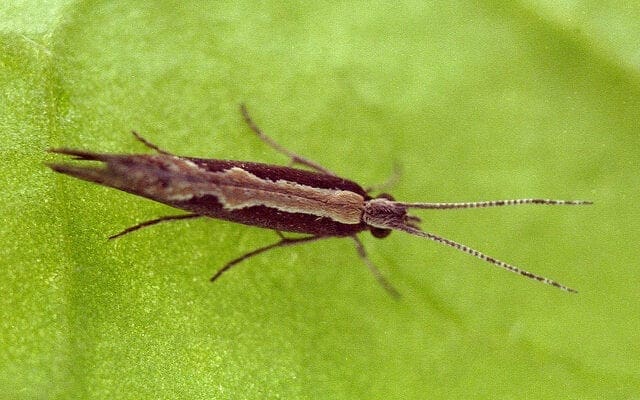Population surges of diamondback moths happen periodically, but the last time such high numbers were recorded was in 1996.
Scientists are warning that brassica crops could be devastated by record numbers of moths arriving from mainland Europe. Tens of millions of diamondback moths are thought to have come to the UK in early June – 100 times the number that normally arrive in the entire year. The Twitter feed @migrantmothUK reported a two-mile cloud of moths on 11 June near Leominster. One subscriber to the feed reported that it was like ‘driving through rain’.
Chris Shortall, research scientist and coordinator of the Rothamsted Research light-trap network, explains, “Normally, we gather the data at the end of the year from the volunteers that run light-traps around the country, but on the basis of these reports I asked them to provide the data that they have so far.” Sites in Eastern England and the Channel Islands reported around 10 times the normal yearly totals over a period of a few nights.
Population surges of diamondback moths happen periodically, but the last time such high numbers were recorded was in 1996. “If the summer weather is warm and favourable for the reproduction of the moths we could see an explosion in the number of the moths by the end of the season,” Chris says.
Adult diamondback moths Plutella xylostella are nocturnal, 8mm in length, grey/brown and long and thin in shape, with diamond markings on their backs. It is their caterpillars, which are green and grow to 12mm in length, that cause the damage, feeding on the soft tissue between leaf veins. Plants can be stripped bare by heavy infestations.
Cabbages are most commonly affected, but they can attack the whole brassica family, including cauliflowers, turnips, kale, Brussels sprouts, broccoli, watercress, mustard and ornamentals including wallflower, candytuft and stocks. Diamondback moths are resistant to most pesticides, but on a garden scale damage can be limited by growing plants under fleece, or by applying a biological caterpillar control.
Find out more at http://www.rothamsted.ac.uk/news-views/exceptionally-high-numbers-diamondback-moths-are-arriving-uk
Photo: Rothamsted Research





